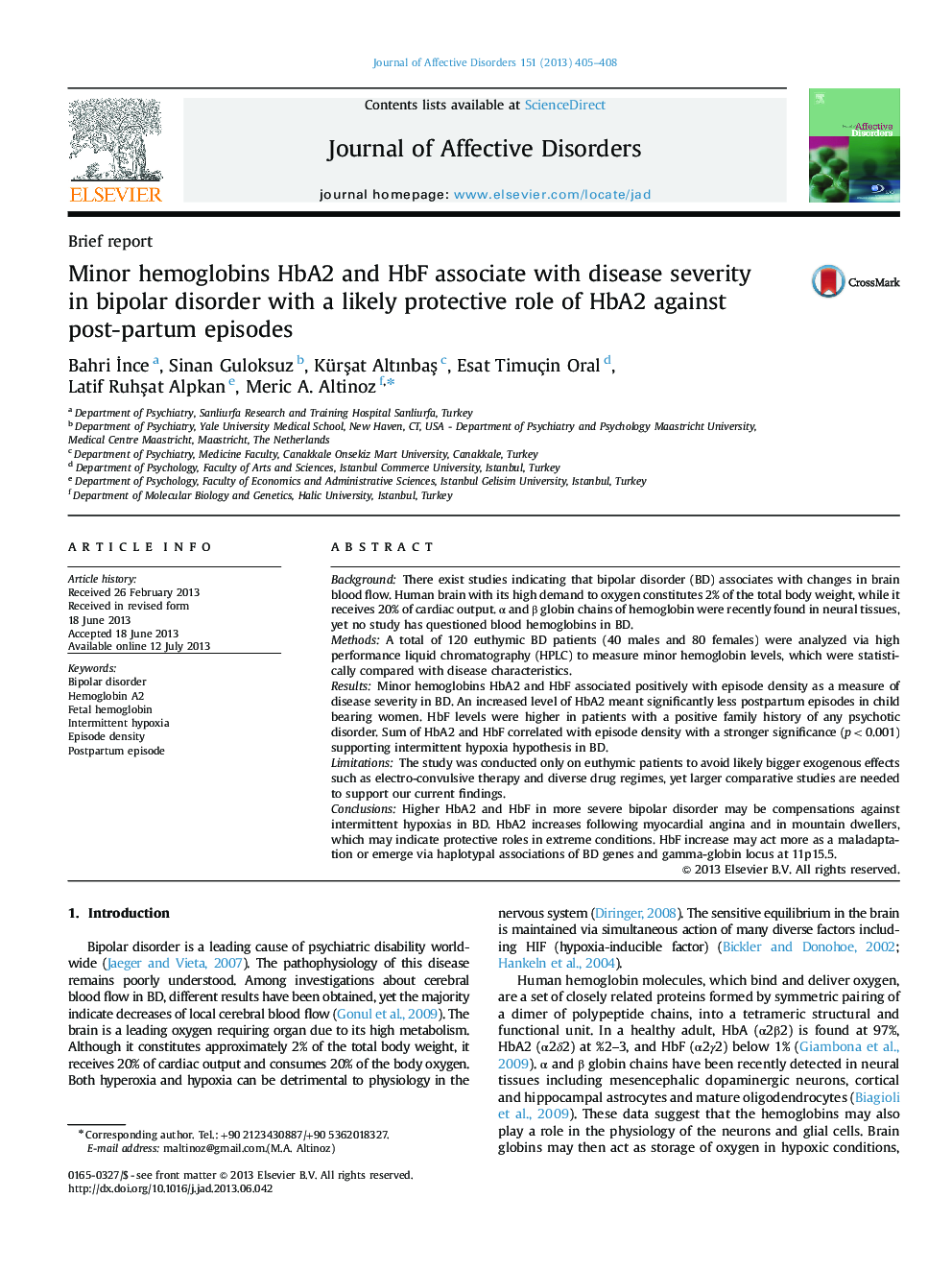| Article ID | Journal | Published Year | Pages | File Type |
|---|---|---|---|---|
| 6234128 | Journal of Affective Disorders | 2013 | 4 Pages |
BackgroundThere exist studies indicating that bipolar disorder (BD) associates with changes in brain blood flow. Human brain with its high demand to oxygen constitutes 2% of the total body weight, while it receives 20% of cardiac output. α and β globin chains of hemoglobin were recently found in neural tissues, yet no study has questioned blood hemoglobins in BD.MethodsA total of 120 euthymic BD patients (40 males and 80 females) were analyzed via high performance liquid chromatography (HPLC) to measure minor hemoglobin levels, which were statistically compared with disease characteristics.ResultsMinor hemoglobins HbA2 and HbF associated positively with episode density as a measure of disease severity in BD. An increased level of HbA2 meant significantly less postpartum episodes in child bearing women. HbF levels were higher in patients with a positive family history of any psychotic disorder. Sum of HbA2 and HbF correlated with episode density with a stronger significance (p<0.001) supporting intermittent hypoxia hypothesis in BD.LimitationsThe study was conducted only on euthymic patients to avoid likely bigger exogenous effects such as electro-convulsive therapy and diverse drug regimes, yet larger comparative studies are needed to support our current findings.ConclusionsHigher HbA2 and HbF in more severe bipolar disorder may be compensations against intermittent hypoxias in BD. HbA2 increases following myocardial angina and in mountain dwellers, which may indicate protective roles in extreme conditions. HbF increase may act more as a maladaptation or emerge via haplotypal associations of BD genes and gamma-globin locus at 11p15.5.
